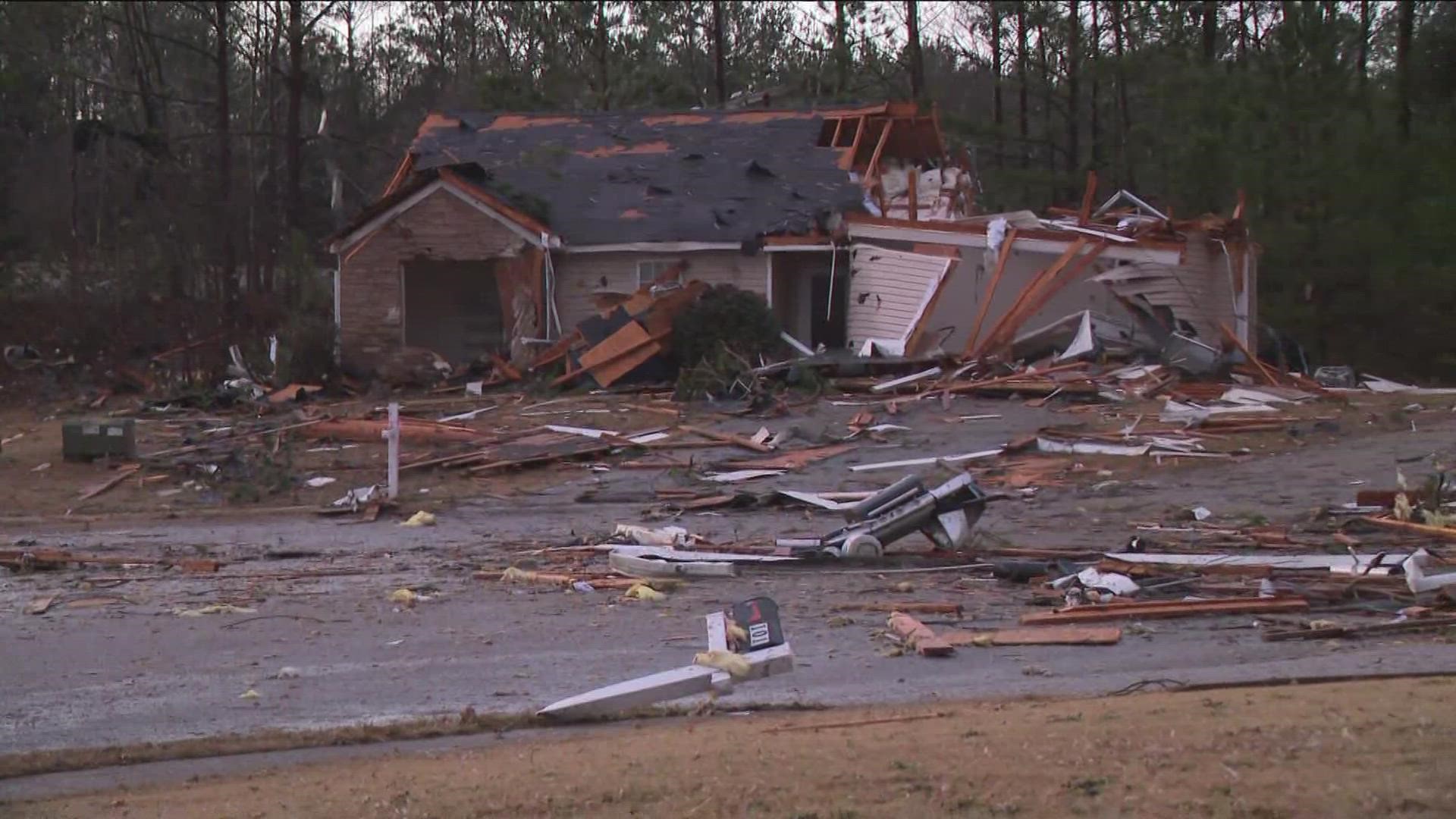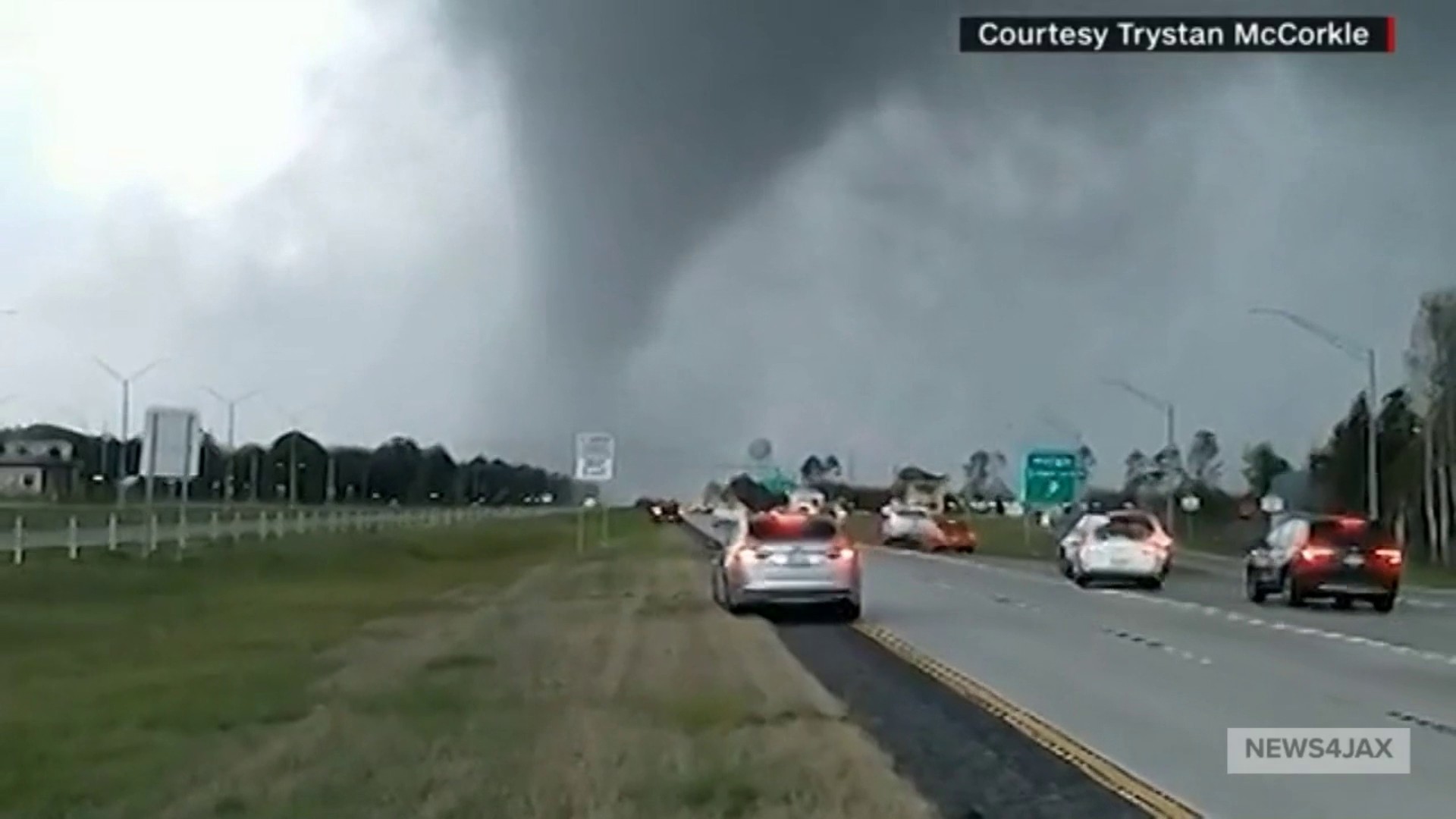Tornado Safety and Preparedness

Tornadoes are violent, rotating columns of air that extend from the base of a thunderstorm cloud to the ground. They are one of the most destructive forces of nature, capable of causing widespread damage and loss of life.
There are many different types of tornadoes, each with its own unique characteristics. Some of the most common types include:
- Weak tornadoes (EF0-EF1) have wind speeds of up to 110 mph and can cause damage to trees, power lines, and buildings.
- Strong tornadoes (EF2-EF3) have wind speeds of up to 165 mph and can cause significant damage to buildings and infrastructure.
- Violent tornadoes (EF4-EF5) have wind speeds of up to 200 mph and can cause catastrophic damage, including the complete destruction of buildings.
It is important to be prepared for a tornado, regardless of where you live. Here are some tips on how to prepare:
- Create an evacuation plan and practice it with your family.
- Assemble an emergency kit that includes food, water, first-aid supplies, and a battery-powered radio.
- Stay informed about the weather forecast during tornado season and be prepared to take shelter if a tornado warning is issued.
Staying Informed
It is important to stay informed about the weather forecast during tornado season, which typically runs from April to June in the United States. You can get weather updates from the National Weather Service website, local news stations, or weather apps on your phone.
If a tornado warning is issued for your area, you should take shelter immediately. The safest place to be during a tornado is in a basement or storm cellar. If you do not have access to a basement or storm cellar, you should go to the lowest level of your home and find a room without windows.
Tornado Damage and Recovery: Tornado Allegan
Tornado allegan – Tornadoes are one of the most destructive forces of nature, capable of causing widespread damage and loss of life. The damage caused by a tornado can vary depending on the intensity of the storm, the type of structures in its path, and the surrounding environment.
Structural Damage
Tornadoes can cause severe structural damage to buildings, homes, and other structures. The high winds can rip off roofs, collapse walls, and shatter windows. The impact of flying debris can also cause significant damage to buildings and vehicles.
Infrastructure Damage
Tornadoes can also damage critical infrastructure, such as power lines, roads, and bridges. This can disrupt essential services and make it difficult for emergency responders to reach affected areas.
Environmental Damage
Tornadoes can also cause significant environmental damage. The high winds can uproot trees, destroy crops, and erode soil. The resulting debris can clog waterways and create breeding grounds for mosquitoes and other pests.
Tornado Recovery Plan
Recovering from a tornado can be a long and difficult process. However, there are a number of steps that can be taken to help speed up the recovery process.
- Assess the Damage: The first step is to assess the damage to your property. This should be done as soon as it is safe to do so.
- File Insurance Claims: If you have insurance, you should file a claim as soon as possible. Your insurance company will be able to help you cover the cost of repairs or replacement.
- Rebuild: Once you have filed your insurance claim, you can begin to rebuild your property. This process can take several months or even years, depending on the extent of the damage.
Case Studies, Tornado allegan
There are a number of successful tornado recovery efforts that can provide lessons learned for future recovery efforts.
One example is the recovery effort in Joplin, Missouri, after the 2011 tornado. The city was devastated by the tornado, but it has since rebuilt and become a thriving community once again.
Another example is the recovery effort in Moore, Oklahoma, after the 2013 tornado. The city was also devastated by the tornado, but it has since rebuilt and become a stronger community than ever before.
These case studies show that it is possible to recover from a tornado and rebuild a stronger community. However, it takes a lot of hard work and dedication from everyone involved.
Tornado Science and Research

Tornadoes, the violent rotating columns of air that extend from the base of a thunderstorm cloud to the ground, are among the most powerful and destructive forces of nature. Understanding the meteorological conditions that lead to tornado formation and developing accurate forecasting and warning systems are critical for protecting lives and property.
Tornadoes form when warm, moist air from the Gulf of Mexico meets cold, dry air from the north. The warm air rises, creating an updraft that can reach speeds of over 100 miles per hour. As the updraft rises, it cools and condenses, releasing energy that fuels the storm. The spinning motion of the tornado is caused by the Coriolis effect, which is the deflection of moving objects due to the Earth’s rotation.
Tornado Forecasting and Warning Systems
Tornado forecasting has improved significantly in recent years thanks to advances in technology and research. Doppler radar can now detect the rotation of the air inside a thunderstorm, which is a sign that a tornado may be forming. Weather satellites can also track the movement of thunderstorms and identify areas where tornadoes are likely to develop.
The National Weather Service issues tornado warnings when there is a threat of a tornado. These warnings are based on radar data, satellite imagery, and reports from storm spotters. Tornado warnings are typically issued within minutes of a tornado forming, giving people time to take shelter.
Tornado Occurrence, Trends, and Impacts
Tornadoes can occur anywhere in the United States, but they are most common in the central and southern plains. The most active tornado season is from April to June, but tornadoes can occur at any time of year.
The number of tornadoes reported each year has increased in recent decades. This is likely due to a combination of factors, including climate change, improved tornado detection methods, and population growth in tornado-prone areas.
Tornadoes can cause significant damage and loss of life. The most destructive tornadoes can have winds of over 200 miles per hour and can level entire communities. Tornadoes can also produce large hail, flash floods, and lightning.
The recent tornado in Allegan has left a trail of devastation, prompting residents to seek updates on the situation. For the latest news and updates, visit kalamazoo news , where you can find comprehensive coverage of the tornado’s impact, relief efforts, and recovery plans.
As the cleanup and rebuilding process continues, stay informed with the most up-to-date information from reliable sources like kalamazoo news.
The wrath of the tornado in Allegan left a trail of destruction, reminding us of the fragility of life. In the midst of the chaos, I yearned for a moment of solace, something sweet to soothe the bitter reality. Like a beacon of hope, the Grimace Shake from McDonald’s came to mind, its vibrant purple hue symbolizing resilience amidst adversity.
Its creamy texture and sweet strawberry flavor offered a brief respite from the storm that had ravaged Allegan.
The tornado that ripped through Allegan left a trail of destruction in its wake. The winds howled like banshees, tearing down trees and power lines. As the storm raged on, I couldn’t help but think about the weather in Fulton, Missouri.
I wondered if the people there were experiencing the same kind of devastation. The tornado finally passed, but the damage it left behind will take months, if not years, to repair.
The tornado that struck Allegan, Michigan, in 2014 left a devastating path of destruction. It is considered one of the most powerful tornadoes in recent Michigan history. For more information on this catastrophic event, visit tornado allegan.
In the aftermath of the destructive tornado that ravaged Allegan, the focus shifted to ensuring the safety of residents. Water contamination became a pressing concern, particularly in light of the recent E. coli outbreak in Lake Anna. As the community worked tirelessly to restore normalcy, the lessons learned from this environmental crisis echoed the importance of water quality and public health.